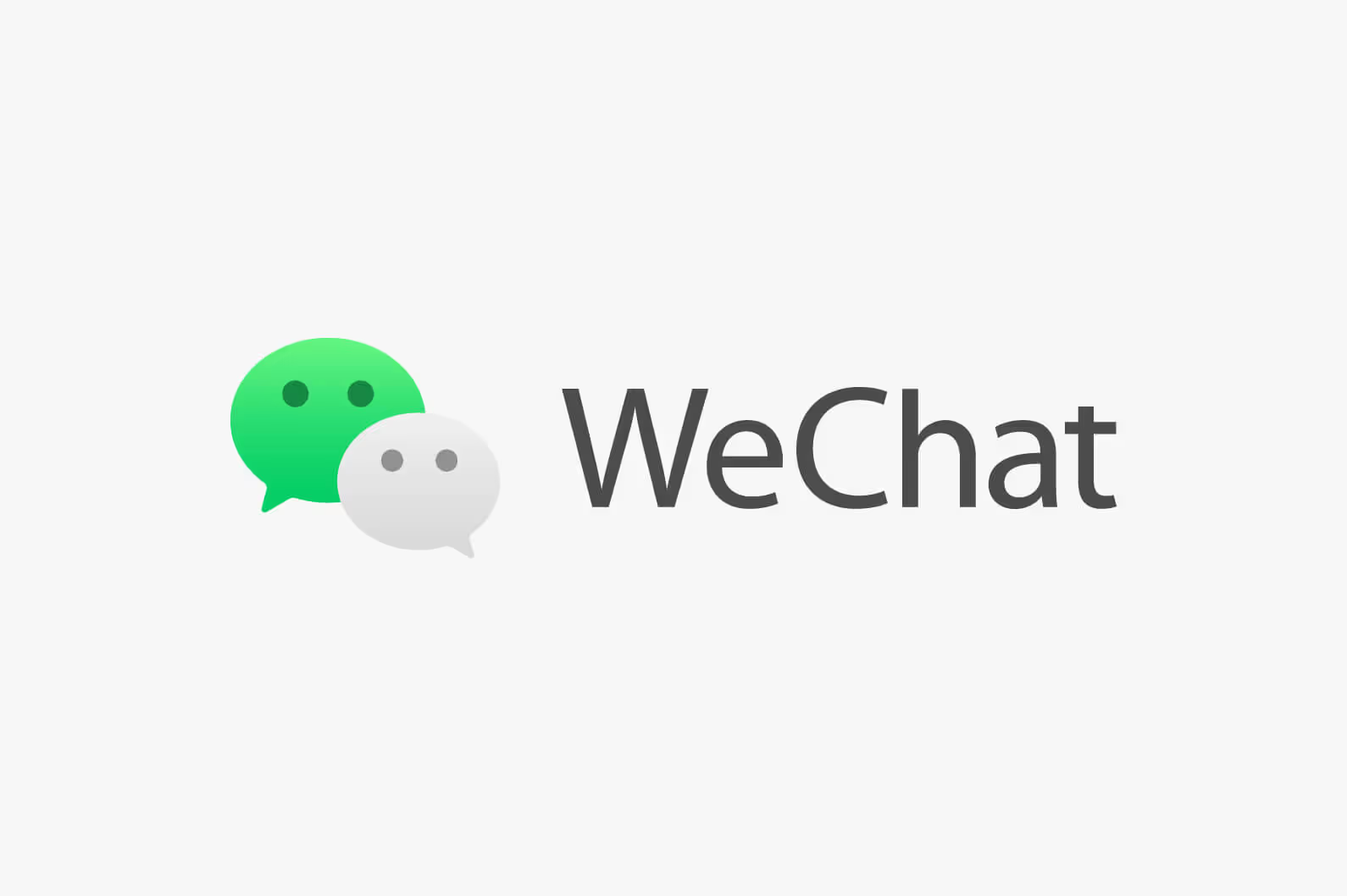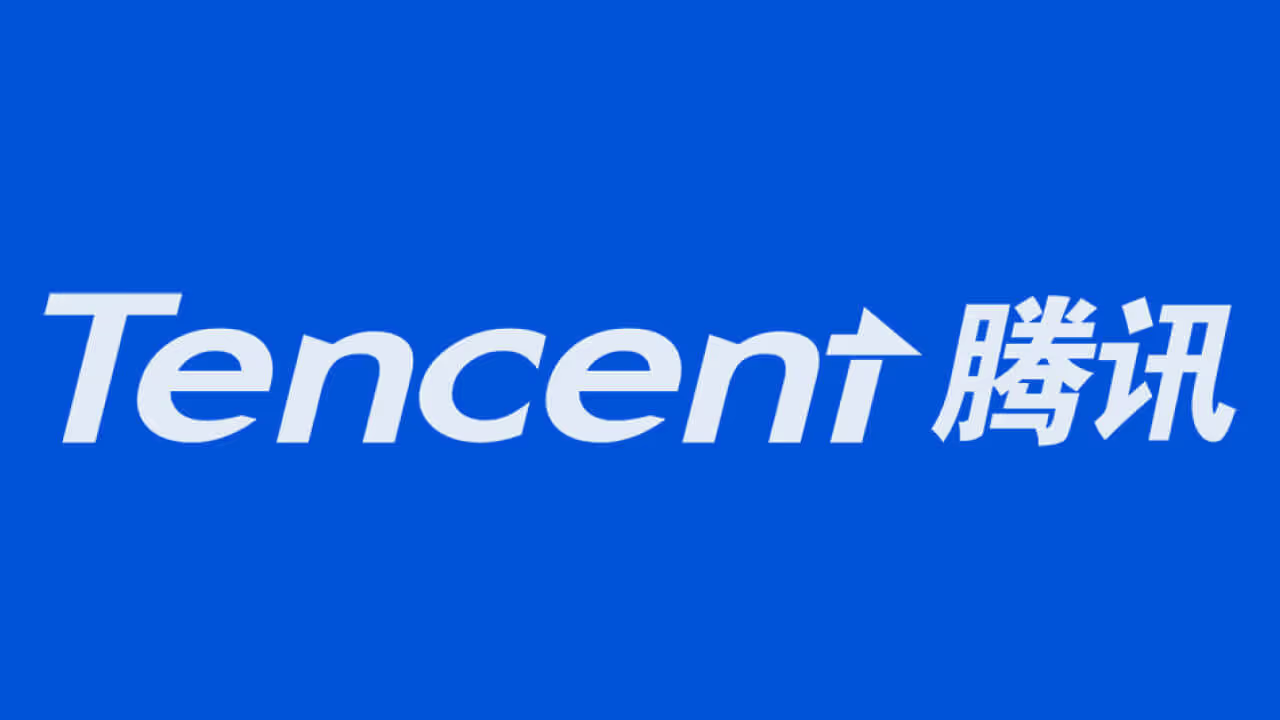Here’s what you’ll learn from Tencent’s strategy study:
- How adapting a foreign product to the domestic market can be highly lucrative, but not without its unique challenges.
- How strong barriers to entry in domestic markets lead to sustained competitive advantage and the opportunity to successfully penetrate foreign markets.
- How prioritizing long-term growth means building a company whose strategic priorities include respecting the environment, taking care of its people, and supporting the community it operates in.
- How well-prepared companies manage economic downturns, and emerge stronger and leaner.
Tencent Holdings Ltd. is a Chinese conglomerate and holding company with headquarters in Shenzhen. It operates in the technology and entertainment industries with a strong focus on video games and multimedia.
It is the world’s largest company, in terms of investment, in the video game industry.
Three parties own over 40% of Tencent. Ma Huateng, Tencent’s co-founder, current CEO and Chairman of the Board, owns a little over 10% with Tony Zhang, co-founder and current advisor emeritus. Naspers owns over 30% of the company. Individual investors own the rest.

Tencent’s market share and key statistics:
- 110,715 employees as of June 30, 2022
- Net worth of $252.52B (November 2, 2022)
- Revenue in 2021: Chinese Yuan RMB 560,118B ($76.56B)
- Market cap of $271,54B as of November 3, 2022
- Over 1.24 billion users in Tencent’s WeChat
- Owns 20 principal subsidiaries as of December 2021 with stakes in hundreds of companies
Humble Beginnings: How did Tencent start?
Tencent was founded in Shenzhen in 1998 by Ma Huateng (also known as Pony Ma), Tony Zhang Zhidong, Xu Chenye, Chen Yidan, and Zeng Liqing.
In its early days, it jumped on enormous opportunities extremely early and pioneered monetization strategies. Tencent’s first steps were uncertain, facing significant challenges with no support. But taking big bets and capitalizing on promising new opportunities laid the foundations for its future massive growth.
Let’s see how Tencent started.
Tencent’s unoriginal product was a success but faced trademark challenges
Tencent’s first product was a paging software called “Open ICQ.”
Intended for Chinese telecom operators, it was a Simple Network Paging Protocol (SNPP) that connected pagers via the internet and allowed them to send and receive messages in real-time.
However, the idea was not original.
The technology was already invented by the Israeli company Mirabilis in 1996 and was called ICQ. Ma encountered the technology at some point and realized its massive potential and opportunity in the Chinese market, where tens of millions of pagers were active. So, along with his four co-founders, he decided to develop a localized version of that technology. They built a Chinese user interface but kept a lot of the ICQ features the same. Within nine months, OICQ registered users were north of one million.
But that success was short-lived.
The same year Tencent was founded, AOL bought ICQ from Mirabilis for $287 million ($523 million today) and tried to penetrate the Chinese market. AOL’s first move was to file a lawsuit against Tencent for violation of ICQ's intellectual property rights with the OICQ domain names. AOL eventually won, and the websites were taken down, but not before Tencent had renamed its platform to QQ.
With the websites down, users' only entrance to the OICQ platform was Tencent's website: Tencent.com. The change of the name of the platform and its relaunch was accompanied by other moves, safeguarding against more lawsuits, despite users' annoyance, like the removal of profile avatars that were almost identical to famous Disney characters.
However, by the time the websites shut down, QQ had already established itself in the Chinese market due to its ease of use, the increased security it offered, and the fact that it was free.
Tencent was recognized as the category queen of instant messaging in Mainland China.
The unexploited value of QQ’s business model
QQ became rapidly prominent in China.
In its first year, the platform had over a million registered users, and within its second year, it reached 50 million. However, the company wasn’t profitable until its third year. That’s because Tencent built upon an original technology, but there was no business model attached to it at the time. In other words, they had the attention of 50 million users – and the cost of keeping it – but no way to cash it in.
Pony Ma tried selling the company, but the offers he got were too small.
He knew he was sitting on a bucket of gold, but he couldn’t prove it yet. His monetization attempts started with advertisements within the platform, which provided a much-needed, though small, boost to the company’s revenue. In 2000, he managed to sell 40% of the company to investors for $2.2 million and build QQ’s user base until an effective monetization strategy was found.

And he did. Ma detected, again, a massive opportunity: mobile phones. So, he struck a deal with mobile operators to use their software and split the fees.
Two years after the first round of investment, Tencent’s revenue was more than $20 million, with the new model providing 80% of the revenue.
Key takeaway #1: Capitalize on emerging opportunities, even with an unfinished plan
Spotting emerging opportunities early is not an easy task nor a guarantee of success.
So, when you do spot one, here is what you should do:
- Move quickly to capture it, even if you’re not sure how to monetize it
- Grow as much as possible what seems to be valuable, even if it’s expensive at the moment
- Find ways to fuel your growth until you discover how to monetize the value
Tencent’s WeChat and aggressive acquisition strategy
Tencent’s leadership made another big move to exploit the rise of smartphones and, in 2011, launched a new app: Weixin.
Though Weixin struggled to get new users in the beginning due to the lack of key features, it quickly became popular when it released a voice messaging feature. It grew to 100 million users within its first year, so Tencent decided to market it internationally and renamed it WeChat. In 2012, it launched an Android version of it.
Today, Wechat is one of the world’s most popular messaging apps. And Tencent’s international presence is strong.
WeChat: Tencent’s first cash cow
The app has more than 1.2 billion monthly active users coming sixth in the international market. However, 1 billion of its users are people living in China, making it by far the most popular messaging app in China.

WeChat has dominated the Chinese market because it offers a wide range of features and services that appeal to users. The app’s messaging function might be its core service, but it also offers social networking, gaming, and e-commerce services.
Wechat is not just a messaging app – it’s an ecosystem, a mega app.
And it has been since 2014. WeChat has a sophisticated interface that integrates with other popular services, such as Didi Chuxing (taxi services, food deliveries, and others), Meituan Dianping (retail services), and JD.com (e-commerce). Through the app, companies can perform a wide range of services, from direct selling to consumers to content marketing. For example, luxury brands like Cartier used it during the pandemic to stay in touch with their customers. It was so effective that the companies kept some of their WeChat services even in the post-pandemic era.
WeChat Pay has supplanted AliPay as the most popular payment service in China.
Tencent, however, remains vigilant and is constantly innovating and adding new features to WeChat. It partners with international companies, such as Uber, and actively tries to penetrate new markets. In 2021, Tencent’s social network revenue reached $17.4 billion, accounting for 19% of its total revenue.
The company’s first engagement with mobile gaming started with WeChat. But today, the company’s core industry is gaming.
Tencent penetrates foreign markets and industries with aggressive acquisitions
Tencent is notorious for two reasons: copying products and aggressive acquisitions.
In contrast to its domestic rivals, which have focused on a wide range of businesses in a bid to amount to a more diverse ecosystem and decrease dependency on individual business sectors, Tencent has adopted an aggressive M&A strategy to dominate the Chinese internet market.

The company has undertaken numerous acquisitions in different internet sectors, often paying a premium for the target companies. In 2013, for instance, Tencent paid $215 million for a 15 percent stake in Sogou, a search engine. Over the years, it has invested in various industries, such as music, comics, television, cinema, virtual reality, and e-commerce, with various levels of success. But its biggest focus has been video games.
A small sample of Tencent’s top acquisitions in the video game space:
- Funcom (video game developer)
- Leyou (video game holding company)
- Riot Games (video game developer, publisher, and esports tournament organizer)
- Wake Up Interactive (digital entertainment developer)
- Discord (VoIP and instant messaging social platform)
Tencent also owns minority stakes in hundreds of top brands and video game developers. Tencent's aggressive acquisition strategy has protected the company from lawsuits since most of its products are highly similar to other companies' products. Taking products that achieve international success, adapting them to Chinese culture, renaming them, and selling them is still one of the company's core strategies.
The company now has a significant presence in all major internet sectors in the country and has developed a diverse ecosystem with an increased user base.
Key Takeaway #2: In nearly isolated markets, domestic players have the advantage
Tencent’s strategy of copying successful foreign products and adapting them to the Chinese market is highly successful mainly for two reasons:
- The barrier to entry for foreign players is high because of the language’s complexity and cultural differences.
- The market is highly regulated, leaving foreign brands unable to transfer strategic advantages while facing severe difficulties in meeting the regulations and standards.
Tencent’s strategy for sustainable, high-quality growth
In China, brands are transitioning from high-speed growth to high-quality growth.
Avoiding the temptation to give a stronger definition of the term, high-quality growth is characterized by short-term growth “that also sets you up for long-term stability and success.”
The government is a major influencer of this transition offering guidance on ESG strategies while leaning heavily on governmental priorities like common prosperity and social stability. The Chinese government is also committed to ambitious environmental goals by 2030 and 2060.
Tencent turns this focus on a greener and more sustainable economy into a core pillar of its long-term strategy.
Tencent’s Environmental, Social and Governance (ESG) strategy
Tencent’s ESG strategy is guided by its mission of “Value for Users, Tech for Good.” The company demonstrates an impressive commitment to its ESG initiatives and provides increasing transparency into its progress each year.
According to the company’s ESG Report of 2021, the implementation of Tencent’s ESG strategy focuses on five pillars:
- Business operations: leading a lawful business with integrity that protects shareholders’ and stakeholders’ interests and provides a safe, inclusive, equitable, and empowering environment to employees.
- Users: protecting users’ data, privacy, and digital properties while listening to their feedback and taking responsibility for Tencent’s platforms’ content.
- Business partners: assisting SMBs with their digital transformation, ensuring fair and equitable treatment of their business partners, and combating illegal or unwarranted behaviors.
- Community and Industry: increasing community investments to implement “Tech for Good,” promoting a digitally inclusive environment and contributing to the advancement of the internet industry.
- Environment: proactively considering its products' environmental impact, reducing its carbon footprint, and assisting in the transition to a low-carbon society.
In order to manage and execute its ESG strategy, Tencent has altered its governance structure. It established the Corporate Governance Committee to oversee the Group’s ESG strategy and the cross-functional body ESG Working Group to advance the strategy’s performance. (great strategies have a well-defined governance element)
To conduct its materiality assessment, Tencent has engaged an external professional agency that considers the input of seven stakeholder groups. Currently, the number one priority in terms of its impact on Tencent’s business and on the stakeholders is Data Privacy and Cyber Security.
Tencent’s commitment and transparency to carbon neutrality is also remarkable.
Tencent’s carbon emission initiatives
In its Carbon Neutrality Target and Roadmap Report, “Tencent pledges to achieve carbon neutrality in its own operations and supply chain, and to use green power for 100% of all electricity consumed by 2030.”
In 2021, the company’s total greenhouse emissions reached 5.111 million tons, and its composition across the three scopes was:
- Scope 1
1.9 million tons which equal 0.4% of the company’s total emissions - Scope 2
243.9 million tons which equal 45.9% of the company’s total emissions - Scope 3
274.3 million tons which equal 53.7% of the company's total emissions.
The company outlines its key initiatives to reach carbon neutrality focusing on three pillars:
Increase its energy efficiency
By reducing energy consumption in their offices and their data centers, and investing in innovative heating and cooling technologies. For example, the company’s global headquarters in Binhai has been awarded a 2-star (out of 3) rating from China's Green Building Rating Program, and the Beijing Headquarters won the LEED BD+C: NC gold certification. Tencent’s 4th generation technology lowers Power Usage Effectiveness (PUE) to at least 1.3.
Increase its renewable energy procurement
By purchasing 500 GWh of renewable energy in 2022 (a 700%+ YOY increase), exploring centralized renewable-energy power plants focusing on wind and solar technologies, and distributed new energy, microgrids, and other technology like rooftop solar cells. For example, its Chongqing data center is powered 100% by renewable energy. Tencent also promotes the development of the market with investments in new energy programs.
Invest in carbon offsets
Due to the complexity of the company’s supply chain, a small portion of its emission goals for 2030 will be achieved by purchasing carbon offsets. The focus will be on marine carbon sinks, agricultural-based carbon offsets, and rural revitalization. Tencent also contributes to the global carbon-neutral process by educating the public about a greener lifestyle through games, charities, and other activities.
The company commits to transparent action and aims to join the Renewable Energy 100 (RE100) while fostering close relationships with the government, industry, and academia. To promote a carbon-neutral ecosystem, it has launched the Tencent Carbon Neutrality Accelerator, which helps startups in the carbon-neutral field grow.
Tencent’s CSR strategy
Tencent is committed to promoting sustainable development and improving the quality of life in the communities in which it operates.
In line with the United Nations Sustainable Development Goals (SDGs), Tencent strives to enhance social inclusion, safeguard the environment, and improve people’s lives through technology and innovation.
Tencent’s CSR strategy is built around the following three pillars:
Tencent Philanthropy
Tencent Philanthropy is the company’s charitable foundation that provides funding and resources to support various social initiatives. Since its establishment in 2007, Tencent Philanthropy has supported over 3,700 projects with a total donation of over RMB 3 billion.
Tencent for Good
Tencent for Good is the company’s CSR portal that raises awareness about social issues and provides a platform for users to donate to various causes. To date, Tencent for Good has supported over 1,700 charities and has raised over RMB 1 billion.
Tencent Foundation
The Tencent Foundation is a public welfare fund that was established in 2013 with a focus on supporting education, health, and environmental protection initiatives. To date, the Foundation has donated over RMB 700 million to various causes. Its annual campaign “99 Giving Day” broke the record for giving among China’s internet charity industry in 2022.
In addition to the three pillars of its CSR strategy, Tencent also has a number of other initiatives and programs that focus on social responsibility. For example, the company has a “Green Office” program that encourages employees to adopt eco-friendly practices at work and a “Tencent Volunteer” program that encourages employees to volunteer their time and skills to various social causes.
With Tech for Good as its vision, Tencent strives to promote sustainable social-value innovation.
Key Takeaway #3: Aim for short-term growth that prepares you for long-term stability
To achieve high-quality growth, you need to make your ESG strategy a core pillar of your overall corporate strategy.
When building your ESG strategy, take into account two things:
Compliance with current regulatory requirements AND readiness for future regulations.
Remember, building a sustainable and stable business is a marathon, not a sprint. Align the company’s investment goals with the environmental guidelines’ KPIs to define proactive actions.
Your stakeholder’s feedback.
Your stakeholders can provide valuable insights into how you can improve your ESG performance. In fact, they may have already raised concerns about specific issues, such as how you’re managing your waste or your impact on the local environment. Make sure to consider the feedback you’ve received and look for ways to address these concerns.
Tencent’s first economic challenge and its strategy to overcome it
Due to macroeconomic trends, the Chinese gaming and tech industry – Tencent’s core business markets – have taken serious hits in 2022.
The Chinese government froze new game approvals in July of 2021 until the first batch of Banhao (game monetization license) approvals in April 2022. Regulations that limited the gaming time of young people also affected the gaming industry, forcing companies to implement cutting-cost strategies.
Tencent wasn’t an exception.

Tencent’s divesting and cutting-costs strategy
2022 has not been a great year for Tencent.
It’s the first year in more than a decade that Tencent has reported a YoY decline in revenue and gross profits. In its interim report for 2022, the company sees its revenue dropping by 1% and its profit for the first half of the year dropping more than 50% compared to last year’s same period.
The company was swift in its reaction, cutting costs and investing in improving internal efficiency. Specifically:
- It closed down non-core businesses, such as online education, e-commerce, and game live streaming
- It rationalized poorly performing businesses, such as loss-making digital content services and sub-scale social media products
- It reduced selling and marketing spending by 21% YoY
- It migrated all domestic in-house services to Tencent Cloud and enhanced cost efficiency
- It reduced the total headcount down by roughly 5,000 QoQ
Tencent started divesting in December 2021, selling 86% of its stake in JD.com, worth $16.4 billion. The company's target in 2022 was to divest $14.5 billion of its portfolio. But in August of the same year, it announced that it plans to divest its Meituan (Chinese e-commerce platform) stake worth $24 billion. The company aims to continue its divestment spree in 2023, as well.
In light of the economic downturn, Tencent tightened its liberal investing strategy to boost the startup ecosystem and shifted to a strategy that focuses on increasing its stakes in stronger and more established companies overseas. It simultaneously offloads lower-valued assets from its portfolio while investing in added-value products and services.
The goal is to position itself for a broader revenue upturn when the Chinese market improves.
Tencent’s growth strategy for the future
The company will shift its focus to 3 areas:
- Increasing internal efficiency
Specifically in the areas of online advertising, cloud services, and social media content. Three areas that showed notable weaknesses in 2022, according to Tencent’s interim 2022 report.
- Overseas acquisitions
The company will continue to invest actively and acquire new game studios outside of China.
- Emerging businesses
The company will focus on investing in emerging businesses with high growth potential. These businesses include AI, blockchain, and the internet of things.
Tencent’s core business remained relatively stable, considering the harsh external conditions. Thus its quick reaction to adapt prepares it for a stronger comeback when the winds become more favorable.
Key Takeaway #4: In an economic downturn, efficiency becomes the number one priority
When the market conditions become hostile, two kinds of companies survive: those with a real strategy and those with a big cash reserve.
Those with both, thrive. Here’s what you need to do to thrive:
- In good times, prepare for tougher times. Build your cash reserve, data flywheel, and strategic advantages.
- In tough times, cut costs and develop efficiency to outlive the competition. Prepare for more favorable times by maintaining your strategic advantages.
Why is Tencent so successful?
Tencent’s journey to becoming one of the world’s most valuable companies is a great case study of what it takes to succeed in the tech industry.
Despite its bountiful copying habits, Tencent is a tremendously innovative company. Its two highest values are fanghian (convenience) and shunhi (smoothness). Every single Tencent product adheres to these values, or it’s killed. This strict policy keeps the company on the cutting edge of innovation and has helped it to stay years ahead of its foreign competitors.
Part of Tencent’s success is the clarity of its vision which works as a golden compass for its decisions.
What is Tencent’s vision?
Tencent’s vision is:
Value for Users, Tech for Good
From its official website, the company strives to:
- Incorporate social responsibility into its products and services
- Promote technology innovation and cultural vitality
- Help industries digitally upgrade and
- Collaborate for the sustainable development of society
And has user value as its guiding principle.
Growth by numbers
Tencent has had steady growth for the past decade and more. Its strategic focus is paying out, and the company has nearly 10x its size since 2015.



